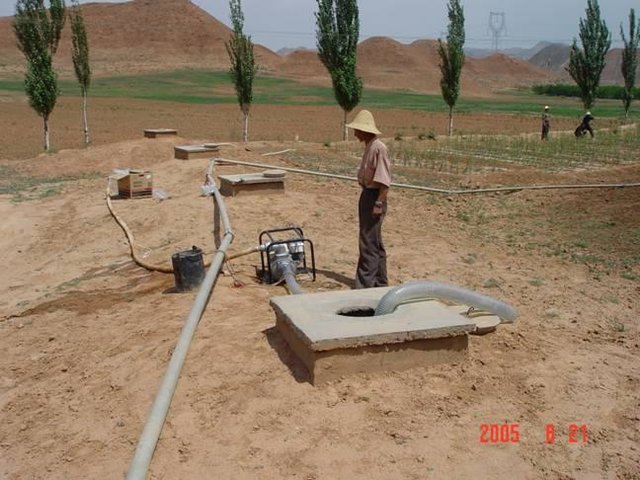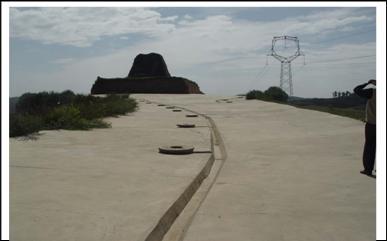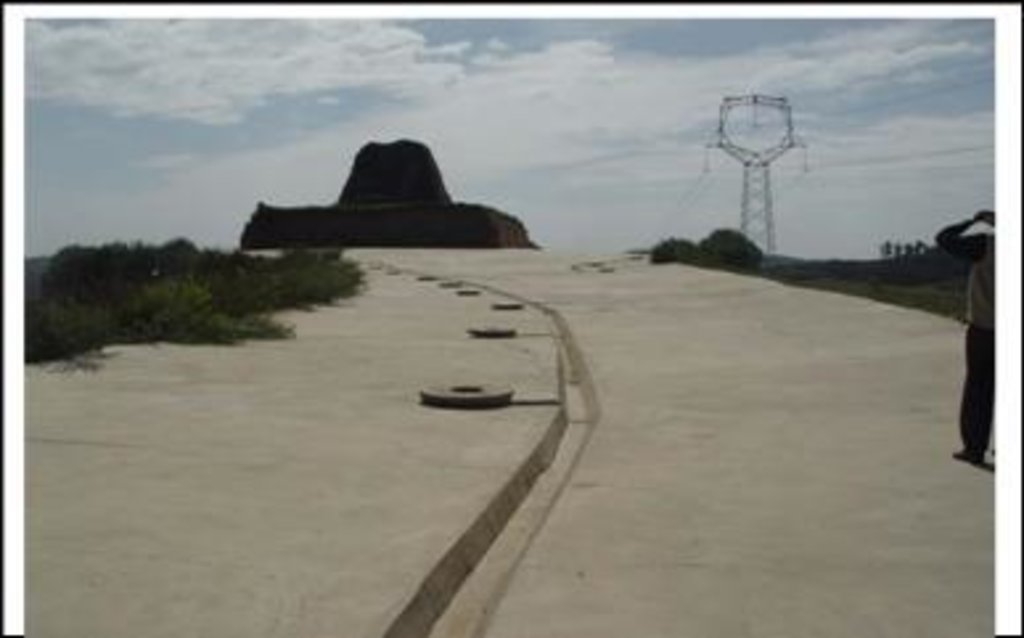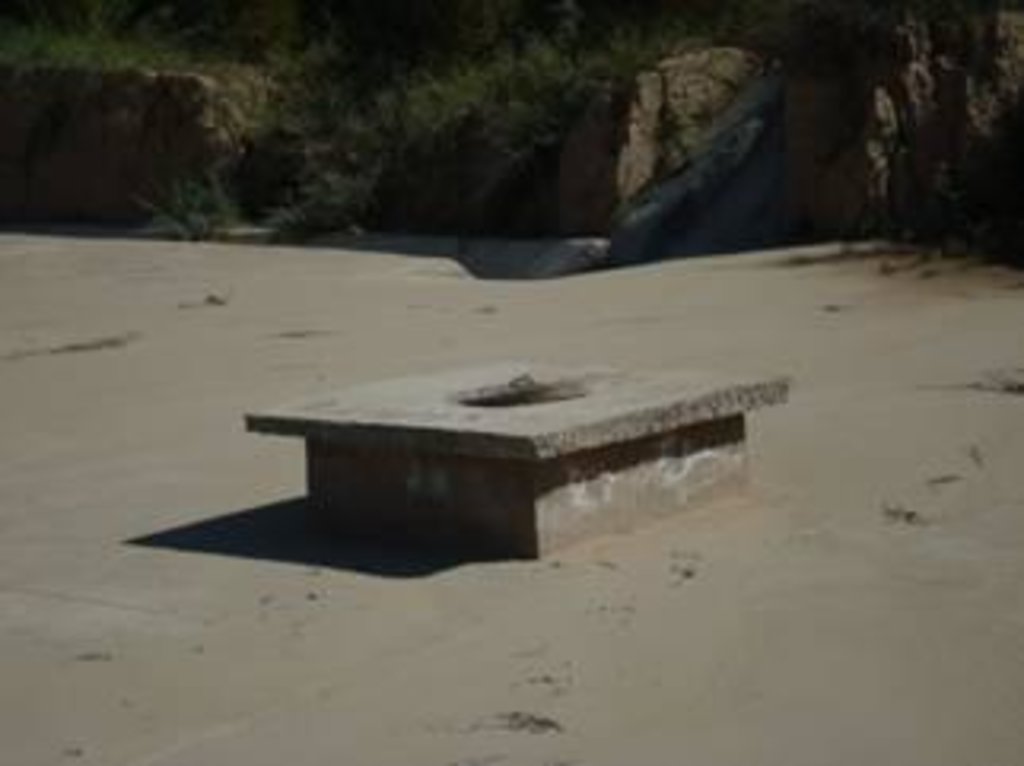Rainwater Cellars [Chine]
- Création :
- Mise à jour :
- Compilateur : Anna Schuler
- Rédacteur : –
- Examinateurs : Deborah Niggli, Alexandra Gavilano
technologies_1335 - Chine
Voir les sections
Développer tout Réduire tout1. Informations générales
1.2 Coordonnées des personnes-ressources et des institutions impliquées dans l'évaluation et la documentation de la Technologie
Nom du projet qui a facilité la documentation/ l'évaluation de la Technologie (si pertinent)
Best Practices for Land Degradation Control in Dryland Areas of China (Best Practices China)1.3 Conditions relatives à l'utilisation par WOCAT des données documentées
Le compilateur et la(les) personne(s) ressource(s) acceptent les conditions relatives à l'utilisation par WOCAT des données documentées:
Oui
1.4 Déclaration sur la durabilité de la Technologie décrite
Est-ce que la Technologie décrite ici pose problème par rapport à la dégradation des terres, de telle sorte qu'elle ne peut pas être déclarée comme étant une technologie de gestion durable des terres?
Non
1.5 Référence au(x) Questionnaires sur les Approches de GDT (documentées au moyen de WOCAT)

Rainwater Cellars introduced through government support [Chine]
Government takes the lead and propelled by project, the rainwater collection for irrigation technology scales up by demonstration.
- Compilateur : Anna Schuler
2. Description de la Technologie de GDT
2.1 Courte description de la Technologie
Définition de la Technologie:
The use of courtyard, roof, road surface, slope, etc. as catchments to collect rainwater for underground water storage for future supply of cropland irrigation as well as drinking water for humans and livestock.
2.2 Description détaillée de la Technologie
Description:
The demonstration site is located in mid Gansu, semi-arid gully area of the Loess Plateau, where either surface or groundwater is in great shortage. The annual precipitation is around 380mm with 60% concentrated in July, August and September in storm form. Due to scarce vegetation and serious soil erosion. The agricultural farming is rainfed, but the timing of precipitation and water demand of crops do not coincide, so that the rainwater utilization is extremely low. Low productivity of land and shortage of water for mankind and animal leads to poverty. Since 1980s the government has organized local people in mid Gansu to explore the utilization of water cellars to achieve coincided precipitation, i.e. collecting rainwater to solve water shortage and develop dryland crop cultivation.
Water cellars are used mainly for the interception of rainwater to supply water for humans and livestock as well as for the irrigation of crops. The cellar is comprised of the cellar body and an ancillary facility, including catchment area, delivery facility (ditch, silt tank, stain interception grate, inlet pipe, cellar opening and irrigation equipment). In general, water cellars are designed to 20-30m3 in capacity. The catchment should be chosen at hillside, road surface, courtyard, roofing, greenhouse roof, etc. For the location selection, considerations should be given to site landform and geological conditions and not proximity to ditch or trench banks, large tree stumps but close to farmland to maximize the possibility of self-flowing irrigation. In consideration of drinking water safety, the cellar should be built far from livestock sheds and toilets to prevent contamination. The silt tank is 2-3m wide, 1m deep and 2-3m away from the cellar opening, and higher than water cellar inlet. The dirt interception grate should be installed 0.5m higher than the base of the silt tank pond and upstream of the inlet. The platform of the water cellar should be 0.3-0.5m high above ground. In Anding District, the concrete cement sphere type water cellar is more often adopted, with the cellar vault/wall of 10cm and base of 20cm thick. At the demonstration site, the inner wall used to be lined with red puddle. Now concrete cement is used for the base and lined with cement and mortar. The water for irrigation does not need special treatment, but drinking water does. Irrigation is done by pumping for watering by ditches flowing to the farmland, hole watering or drip irrigation.
Since mid 1990s, the water cellar has expanded gradually. The 1-2-1 rainwater collection project (each household has 1 catchment, 2 water cellars and 1 patch of courtyard cashcrop forest) has played a significant role in the technology dissemination and poverty alleviation. Since 2000, water cellar function has been further extended toward multifunction for livestock raising, farmland/forest land irrigation and so forth, and greater economic and social benefits are captured by its combination with greenhouse development. Plastic film greenhouse roof was used as the catchment and two water cellars (30 cubic meters capacity for each) were set for each greenhouse. In combination with other technologies of mulched ditch irrigation or drip irrigation, water resource utilization has been tremendously increased. The technology has thereby triggered industrial restructuring as outstanding pilot sites for high benefit agricultural development.
2.3 Photos de la Technologie
2.5 Pays/ région/ lieux où la Technologie a été appliquée et qui sont couverts par cette évaluation
Pays:
Chine
Région/ Etat/ Province:
Gansu Province
Autres spécifications du lieu:
Anding District, Dingxi City
Commentaires:
Total area covered by the SLM Technology is 3638.7 km2.
3. Classification de la Technologie de GDT
3.1 Principal(aux) objectif(s) de la Technologie
- améliorer la production
3.2 Type(s) actuel(s) d'utilisation des terres, là où la Technologie est appliquée
Les divers types d'utilisation des terres au sein du même unité de terrain: :
Oui
Précisez l'utilisation mixte des terres (cultures/ pâturages/ arbres):
- Agropastoralisme (y compris les systèmes culture-élevage intégrés)

Terres cultivées
Précisez:
Longest growing period in days: 140, Longest growing period from month to month: May to October

Pâturages

Voies d'eau, plans d'eau, zones humides
- Voies de drainage, voies d'eau
Principaux produits/ services:
Rainwater Cellars
Commentaires:
Major land use problems (compiler’s opinion):
- low precipitation, deficient groundwater, arid and short of water supply;
- rainfall in form of storms to form runoff arousing serious soil and water erosion;
- low and unstable land productivity because of aridness and soil infertility.
3.5 Groupe de GDT auquel appartient la Technologie
- gestion de l'irrigation (incl. l'approvisionnement en eau, le drainage)
- dérivation et drainage de l'eau
4. Spécifications techniques, activités, intrants et coûts de mise en œuvre
4.4 Coûts et intrants nécessaires à la mise en place
| Spécifiez les intrants | Unité | Quantité | Coûts par unité | Coût total par intrant | % des coût supporté par les exploitants des terres | |
|---|---|---|---|---|---|---|
| Main d'œuvre | labour | 1,0 | 140,0 | 140,0 | ||
| Equipements | steel bar | 1,0 | 26,7 | 26,7 | ||
| Matériaux de construction | sand gravel | 1,0 | 33,3 | 33,3 | ||
| Matériaux de construction | concrete cement | 1,0 | 40,0 | 40,0 | ||
| Matériaux de construction | bricks | 1,0 | 5,3 | 5,3 | ||
| Autre | transportation | 1,0 | 26,7 | 26,7 | ||
| Coût total de mise en place de la Technologie | 272,0 | |||||
| Coût total de mise en place de la Technologie en dollars américains (USD) | 272,0 | |||||
4.6 Coûts et intrants nécessaires aux activités d'entretien/ récurrentes (par an)
| Spécifiez les intrants | Unité | Quantité | Coûts par unité | Coût total par intrant | % des coût supporté par les exploitants des terres | |
|---|---|---|---|---|---|---|
| Main d'œuvre | labour | 1,0 | 23,3 | 23,3 | 100,0 | |
| Autre | transportation | 1,0 | 2,67 | 2,67 | 100,0 | |
| Coût total d'entretien de la Technologie | 25,97 | |||||
| Coût total d'entretien de la Technologie en dollars américains (USD) | 25,97 | |||||
5. Environnement naturel et humain
5.1 Climat
Précipitations annuelles
- < 250 mm
- 251-500 mm
- 501-750 mm
- 751-1000 mm
- 1001-1500 mm
- 1501-2000 mm
- 2001-3000 mm
- 3001-4000 mm
- > 4000 mm
Zone agro-climatique
- semi-aride
5.2 Topographie
Pentes moyennes:
- plat (0-2 %)
- faible (3-5%)
- modéré (6-10%)
- onduleux (11-15%)
- vallonné (16-30%)
- raide (31-60%)
- très raide (>60%)
Reliefs:
- plateaux/ plaines
- crêtes
- flancs/ pentes de montagne
- flancs/ pentes de colline
- piémonts/ glacis (bas de pente)
- fonds de vallée/bas-fonds
Zones altitudinales:
- 0-100 m
- 101-500 m
- 501-1000 m
- 1001-1500 m
- 1501-2000 m
- 2001-2500 m
- 2501-3000 m
- 3001-4000 m
- > 4000 m
5.3 Sols
Profondeur moyenne du sol:
- très superficiel (0-20 cm)
- superficiel (21-50 cm)
- modérément profond (51-80 cm)
- profond (81-120 cm)
- très profond (>120 cm)
Texture du sol (de la couche arable):
- fin/ lourd (argile)
Matière organique de la couche arable:
- moyen (1-3%)
5.6 Caractéristiques des exploitants des terres appliquant la Technologie
Orientation du système de production:
- exploitation mixte (de subsistance/ commerciale)
5.8 Propriété foncière, droits d’utilisation des terres et de l'eau
Propriété foncière:
- état
- groupe
Droits d’utilisation des terres:
- individuel
6. Impacts et conclusions
6.1 Impacts sur site que la Technologie a montrés
Impacts socio-économiques
Autres impacts socio-économiques
Short term economic burden
6.2 Impacts hors site que la Technologie a montrés
Reduce silt inflow of the downstream
Runoff decease of the downstream
6.4 Analyse coûts-bénéfices
Quels sont les bénéfices comparativement aux coûts de mise en place (du point de vue des exploitants des terres)?
Rentabilité à court terme:
négative
Rentabilité à long terme:
positive
Quels sont les bénéfices comparativement aux coûts d'entretien récurrents (du point de vue des exploitants des terres)?
Rentabilité à court terme:
positive
Rentabilité à long terme:
positive
6.7 Points forts/ avantages/ possibilités de la Technologie
| Points forts/ avantages/ possibilités du point de vue du compilateur ou d'une autre personne ressource clé |
|---|
| Intercept and retain runoff and reduce soil and water losses |
| Supplementary irrigation to the cropland for higher production |
6.8 Faiblesses/ inconvénients/ risques de la Technologie et moyens de les surmonter
| Faiblesses/ inconvénients/ risques du point de vue du compilateur ou d'une autre personne ressource clé | Comment peuvent-ils être surmontés? |
|---|---|
| High initial establishment cost | seek more project support |
7. Références et liens
7.1 Méthodes/ sources d'information
- visites de terrain, enquêtes sur le terrain
- interviews/entretiens avec les exploitants des terres
Quand les données ont-elles été compilées (sur le terrain)?
13/09/2007
7.2 Références des publications disponibles
Titre, auteur, année, ISBN:
Wang Lin, Water cellar Construction technology for rainwater collection and water-saving irrigation in the mountainous areas, Gansu water conservancy and hydro power technology. 2002 38(4)
Liens et modules
Développer tout Réduire toutLiens

Rainwater Cellars introduced through government support [Chine]
Government takes the lead and propelled by project, the rainwater collection for irrigation technology scales up by demonstration.
- Compilateur : Anna Schuler
Modules
Aucun module trouvé




